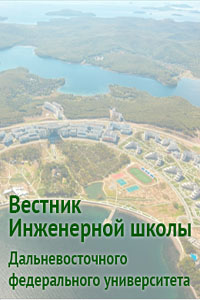Friction stir welding technology of aluminum alloy
DOI:
https://doi.org/10.24866/2227-6858/2024-2/12-20Keywords:
friction stir welding, temperature fields, experiment, technology, cyclicity, leading edge temperature, reheating timeAbstract
Calculations and experiments have shown that during friction stir welding of aluminum alloys of the AMg3 type, the highest temperature value is observed in the area of the trailing edge of the tool, where stirring has already ended, while the temperature difference at the trailing and leading edges of the tool can be 150–250 °C. To determine the rate of heating of the metal of a plate made of aluminum alloy AMg3 due to friction when the rotating tool is stationary, we conducted an experiment using 4 Chromel-Copel thermocouples with a diameter of 0.2 mm. Thermocouples are stamped into the plate at distances of 5–10 mm from the center of the tool. As a result of experiments, it was revealed that with an increase in rotation speed from 70 to 88 rad/s, the heating time from temperatures of 60–100 °C to 450–500 °C decreases from 110 to 30 s. In addition, it was revealed that during this heating the temperature of the material under the shoulder has the same values over its entire area. As a result of the analysis of these data, it is proposed to set the motion mode of the rotating tool as cyclic with periodic stops to heat up the material of the plates being welded. During stops, heat input from the tool due to friction occurs evenly around the pin and shoulder, and the maximum temperature develops around the pin, and not in the area of the trailing edge of the tool. It is proposed to use two schemes. According to the first scheme, it is proposed to measure the temperature of the plates being welded along the leading edge of the shoulder – when its welding temperature is reached, the rotating tool moves by a step equal to 0.4–0.5 of the diameter of the shoulder. According to the second scheme, it is proposed to use the calculated value of the time required to heat the material under the shoulder to the welding temperature, which was determined from the results of experiments for an aluminum alloy of the AMg3 type with a thickness of 4 mm.
Downloads
Published
Issue
Section
License
Copyright (c) 2024 Far Eastern Federal University: School of Engineering Bulletin

This work is licensed under a Creative Commons Attribution 4.0 International License.

